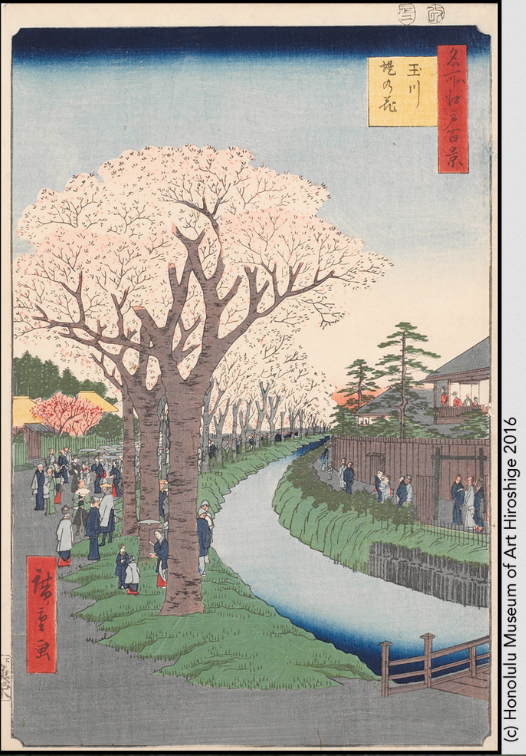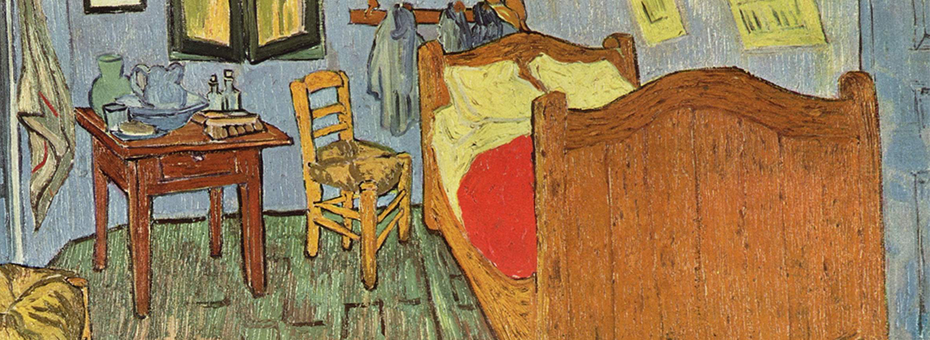I was standing in a backroom in the Honolulu Museum of Art that was off-limits to the public. In this one room, protected from bugs, humidity, and light, was the world’s largest collection of Japanese woodblock prints. My childhood friend Shawn is an unlikely expert on these beautiful artifacts.
One of the things I geek out on is watching other geeks geek out on what they geek out about. I love to listen to people talk about what they really love and Shawn did not fail to deliver. Through him we met the people, the business models, the supply chains, the evolving use cases, the ink choices, the artists, the engravers, the labor disputes, the burnout, and so on, of an industry centuries in the past. It was gorgeous detail.

In the middle of all of this, Shawn was discussing the notion of “Ma”; or, negative space (other definitions are a bit more expansive, suggesting that “Ma” represents a “pause in time, an interval or emptiness in space”). There would be great detail in the mountains, even great (like nearly impossibly great) detail in the snow, but equally important was the spaces in between. Where the artist chose to engage your eye, your imagination, your reminiscence, and where the artist gave your eye a rest. Space to think. Space to dwell. Space to understand. Space to simply be.
Even if we think that value is delivered by direct action, in the case of the snow, snowflakes have no definition without space between them and other snowflakes. Consider that each snowflake, or in this case each limb of the tree, only exists in space by having separation from other snowflakes or limbs. The definition of something is only made when we have the cognitive space to recognize it and think about it.
While we often focus on waste reduction and see 5S as a mechanism for waste reduction, it is actually a dedicated effort to introduce negative space into a production environment. Clean and less chaotic environments tend to be safer and calmer. We introduce Ma into the inhumane world of the assembly line. We can focus on the value because we are no longer confronted by clutter.
But life gets a little more complicated when we are in the office, doesn’t it?
Strangely, but not surprisingly, Lean thinking in the office has historically jumped to the conclusion that negative space is created by having clean desks or no family photos or nothing stuck to the walls. It’s easy to assume that all negative space is physical.
One of the most productive and organized guys I’ve worked with is named Tom. Tom’s New York office looks like someone stole his filing cabinets but left the files behind. Little towers of files covering every horizontal surface. But Tom gets everything done. Every conversation we have in his office, at some point, has him say, “Here, lookit this.” He’ll rummage around for a bit, but only a bit, and magically produce something relevant.
So Tom doesn’t need to “clean” his desk.
Around the corner from him Charlie’s office very quickly lets you meet every member of his family and get a good idea of who he is. It’s usually pretty neat, but it’s a pretty neat photo album, book rack, and Personal Kanban.
Counterintuitively, for both Tom and Charlie, their “clutter” is their Ma.
Negative space in a woodblock or in interior decorating or on the shop floor shows up as a visible physical distance between things. But in knowledge work, Ma may well be any element or space that allows our brains to operate a little more smoothly. Cognitive negative space. Things that allow us to take a break and think. Things that make us worry less.
Tom’s files give him the reassurance that whatever he needs is there when he needs it. It looks like chaos to us, but it’s smooth sailing for him. Charlie’s family is central to him and he’s at work a lot, staying connected to them lets him focus on what’s important at work while being connected to what important outside the office. For me, my office is divided into different work areas. My desk oscillates between clutter and cleanliness, but the reading corner is always tidy.
If you “straightened” Tom’s files or “sorted” Charlie’s photos, their productivity would not rise. But their feeling of humanity, of professionalism, and of individuality would decrease. And in knowledge work, these are the elements of quality work and effective people.
When we lead with respect for people, we need to truly understand that people work in different ways. Variation in style is crucial in knowledge work. In the office, negative space isn’t just physical, it is mental, it is temporal, it’s emotional. It is personally defined.
Beneficial cognitive gaps for knowledge workers may not be space, they may be triggers. These triggers cause action and, more importantly, reflection. They remind the knowledge worker of contexts outside the office or the project. They fill in the gaps of innovation, creativity, and comfort.
These gaps might be time. Breaks in the day where the brain can absorb what has happened, write new experiences to long-term memory, and have epiphanies. Gaps that allow pause to reflect, realize, and redirect.
So we must ask:
Do we have beneficial gaps to rest?
Do we have beneficial gaps to think?
Do we have beneficial gaps to be human?
In this case the word “beneficial” is intentional. Beneficial constraints are what create systems. In Lean we seek to find harmful constraints and exploit beneficial ones. Production time / cost being the most obvious two.
In this case, a beneficial constraint can be expressed as a gap in perceived “productive time” that actually enables the ability to produce in a quality way. Without them we lose valuable cognitive processing time.
These gaps are not necessarily big spaces or large amounts of time, their benefits can literally last as long as an idle glance past a picture of your daughter, and their value is almost always ignored. What might seem like “clutter” to the strict 5S’er is, in a non-intuitive way, beneficial.
When we build systems for humans to work, we must include triggers and time. Time to learn, time to have real respect for people, and time to figure out what unexpected things might actually be physical manifestations of negative space.
I ask of you: do not fixate on shaving seconds from processes; do not dwell in the world of pathological waste reduction. Live, seriously live, in a world that gives professionals the liberty to define their own Ma.






